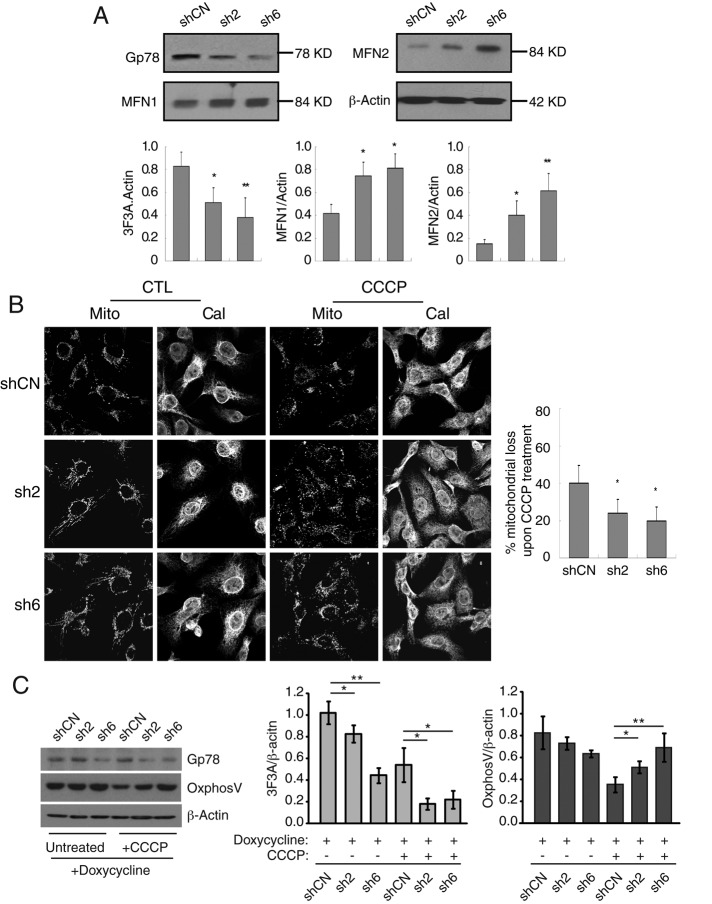FIGURE 4:
Gp78 knockdown restricts mitophagy in HT-1080 fibrosarcoma cells. (A) pTRIPZ lentiviral vectors expressing nontargeted shRNA (shCN) or Gp78-targeted shRNAs (sh2 and sh6) were used to generate inducible Gp78-knockdown HT-1080 cells. shRNA expression was induced by doxycycline treatment for 72 h, and cell lysates were probed by Western blot for 3F3A, Mfn1, Mfn2 and β-actin. (B) shCN, sh2, and sh6 pTRIPZ HT-1080 cells were induced with doxycycline for 72 h and then either left untreated (CTL) or treated with CCCP for 24 h in the continued presence of doxycycline. The cells were then labeled with antibodies to mitochondrial OxPhosV (Mito) and to the ER marker calnexin (Cal) to identify the cells. Bar graphs show the percentage loss of mitochondrial mass of CCCP-treated cells relative to untreated cells ((mitochondrial area[CTL − CCCP]/mitochondrial area[CTL]) × 100; see Supplemental Table S1 for mitochondrial area values). (C) Western blots show anti-Gp78 (3F3A), mitochondrial OxPhosV, and β-actin expression in the cells. 3F3A and OxPhosV band density were quantified by densitometry relative to β-actin (n = 3, ±SEM; *p < 0.05, **p < 0.01).

